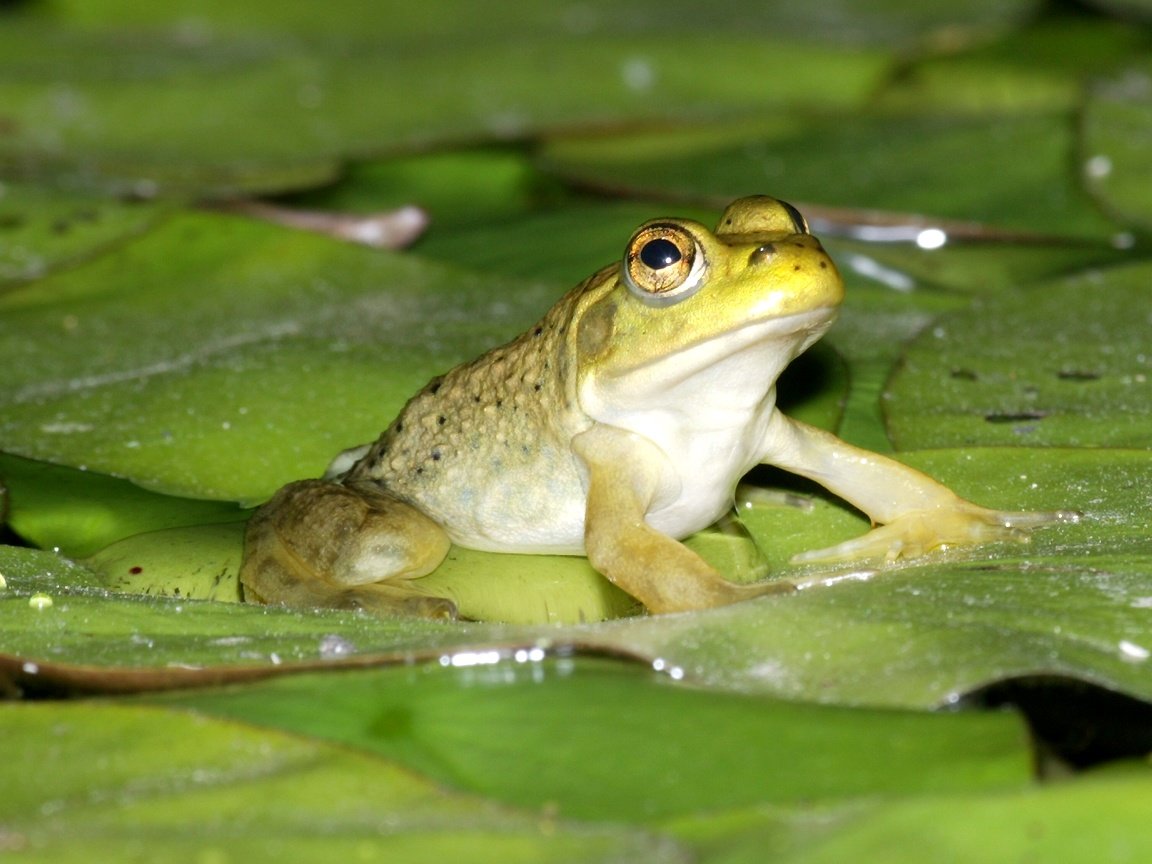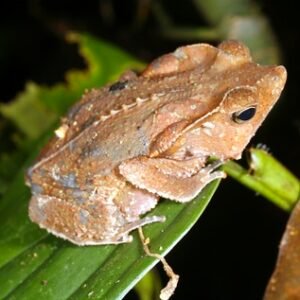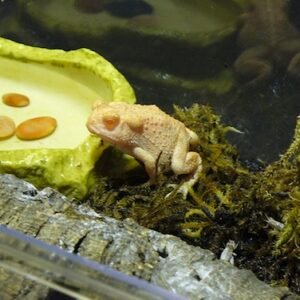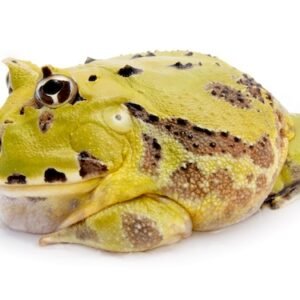Exploring the World of Bullfrogs: Nature’s Amphibian Giants
Introduction to Bullfrogs
Bullfrogs belong to the family Ranidae and are members of the genus Lithobates. Among the various species within this genus, the American Bullfrog (Lithobates catesbeianus) is the most well-known, particularly in North America. This amphibious creature is characterized by its large size, often reaching up to 8 inches in length, and can weigh over a pound. They possess a robust body supported by strong hind legs that are well-adapted for leaping and swimming, making them effective predators in their aquatic habitats.
The coloration of bullfrogs typically consists of a green or olive upper body, which can sometimes have dark spots or mottling. Their underbelly is pale, providing a stark contrast to their more vivid dorsal side. A distinguishing feature of the American Bullfrog is the presence of a prominent tympanum – the external ear membrane – found just behind the eyes, which is often larger in males than females. Their skin is smooth, and they have long webbed feet, enabling them to navigate through their watery environments efficiently.
Bullfrogs thrive in a variety of freshwater ecosystems, including ponds, marshes, and slow-moving streams. They are often found near shallow, warm waters that provide ample vegetation for cover and abundant food sources, such as insects, small fish, and other aquatic creatures. These habitats not only support their survival but also facilitate their distinct vocalizations, particularly during the breeding season when males call out to attract females. The deep, resonant croak of the bullfrog is iconic and often signifies the presence of these remarkable amphibians in their natural environments.
Behavior and Diet
Bullfrogs (Lithobates catesbeianus) are renowned for their distinctive behaviors and carnivorous diet, which play a crucial role in their ecological niche. One of the most notable behavioral patterns exhibited by bullfrogs is their breeding habits. Breeding typically occurs from late spring to early summer, where males establish territories to attract females. Their distinctive croaking sounds serve both to ward off competitors and to signal their presence to potential mates. Males often engage in aggressive interactions with other males to defend their territory, showcasing social hierarchies and dominance behaviors within populations.
Regarding their hunting techniques, bullfrogs are opportunistic predators. They primarily utilize ambush strategies, remaining motionless until an unsuspecting prey approaches within striking distance. Their powerful legs enable them to leap significant distances to capture prey, which includes insects, small mammals, and even other amphibians. Bullfrogs have a voracious appetite and are known to consume prey that is up to half their body size, demonstrating their role as apex predators in their ecosystems.
The diet of bullfrogs is primarily carnivorous, consisting predominantly of invertebrates such as crickets, dragonflies, and aquatic organisms like fish and crustaceans. They play a vital role in the food chain, serving as both predators and prey. Environmental factors, such as habitat types and seasonal changes, significantly impact their diet and feeding behavior. For instance, during periods of drought, when food sources may be scarce, bullfrogs may alter their diet to include more readily available prey. This adaptability shows their resilience and overall importance within their habitat, as they help regulate prey populations and contribute to the overall health of their ecosystems.
Life Cycle and Reproduction
Bullfrogs (Lithobates catesbeianus) are remarkable amphibians known for their substantial size and distinctive features. Their life cycle comprises several distinct stages, beginning with the egg, followed by the tadpole phase, and culminating in adulthood. The reproductive process plays a crucial role in ensuring the continuation of these amphibian giants.
The bullfrog’s reproductive strategy is particularly intriguing. In the spring and early summer, male bullfrogs emit characteristic mating calls to attract potential mates. This vocalization is not merely a display of fitness but a vital part of their courtship behavior. The timing of reproduction is closely linked to environmental cues, such as temperature and the presence of water bodies, which are essential for the development of eggs and tadpoles. After successful mating, females lay anywhere from 4,000 to 20,000 eggs in shallow water, creating a foam nest that provides some protection from predators.
The eggs hatch within a few days, leading to the tadpole stage, during which the young are primarily herbivorous. Tadpoles exhibit remarkable adaptability; they can respond to varying ecological conditions, such as changes in water temperature and food availability, which significantly influence their growth and development. As tadpoles, they undergo metamorphosis, a process that can take several weeks to months, depending on environmental factors. This stage culminates in the transition to adult bullfrogs, where they develop limbs, absorb their tails, and adapt to a carnivorous diet.
Unlike some amphibians that exhibit substantial parental care, bullfrogs have a more laissez-faire approach. Once the eggs are laid, there is little to no parental involvement in the subsequent stages. This method, while risky, allows for greater reproductive output, which can be advantageous in ensuring the survival of the species amidst various ecological challenges.
Conservation Status and Human Impact
The conservation status of bullfrogs (Lithobates catesbeianus) presents a critical consideration as these amphibians face numerous challenges in their natural habitats. Habitat destruction is perhaps the predominant threat, largely driven by urbanization, agriculture, and industrial development. As wetlands and aquatic ecosystems are drained or altered, bullfrogs lose essential breeding and foraging grounds, which may significantly contribute to their population decline in certain regions.
Additionally, climate change exerts considerable pressure on bullfrog populations. Altered rainfall patterns, increased temperatures, and extreme weather events can disrupt breeding cycles and reduce the availability of suitable habitats. Such changes can lead to an increase in mortality rates among bullfrog tadpoles, hindering population recovery. Pollution, too, presents a substantial risk, as chemicals and waste products enter aquatic environments, affecting both the health of bullfrogs and their food sources.
Moreover, the introduction of invasive species compounds these challenges. In many ecosystems, bullfrogs themselves have been classified as invasive species, outcompeting native amphibians for resources and introducing diseases. This dual role as both an affected and affecting species complicates conservation efforts and necessitates a nuanced approach to habitat management.
To effectively ensure the survival of bullfrogs, various conservation strategies can be implemented. Public participation in conservation efforts, such as habitat restoration projects, is critical. Educational initiatives aimed at raising awareness about the impacts of human activities on bullfrogs can foster a more informed community. Furthermore, policies advocating for the preservation of wetland areas and regulations against pollution can create safer environments for these amphibians. It is imperative that concerted efforts are made to preserve bullfrogs, as their presence plays a vital role in maintaining ecological balance within their ecosystems.





